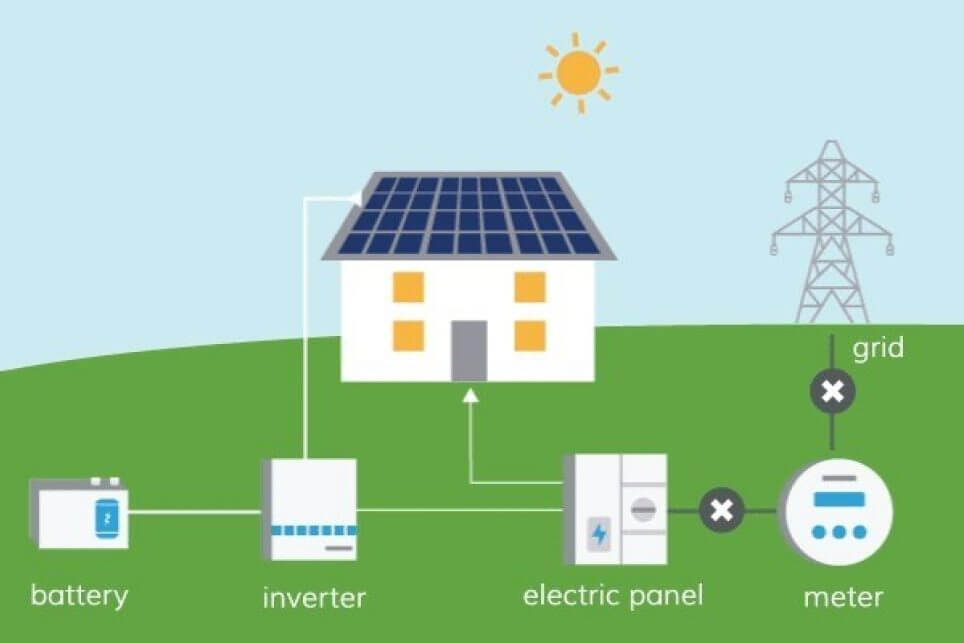Generating Electricity
In common with many great inventions, a theoretical discovery was made many years before the practical implementation of that discovery came along. In this case, in 1839, Edmond Becquerel, an inexperienced French physicist, was the first to discover the photovoltaic effect. Other than as an interesting phenomenon, it changed nothing.
Later on, in 1860, another Frenchman, Augustin Mouchot, became inspired by the work of his countryman and started registering patents connected with solar-powered engines. He was just the first, and by 1888, there was a global interest in solar power, with patents for various solar-powered devices. This interest and consequent development work would ultimately result in solar companies in Calgary and beyond.
Across the Atlantic, in New York, Charles Fritz created the original solar cell in 1883. He made impressive claims about his solar cell achieving a conversion rate of between 1% and 2%. If we consider that today modern cells work at between 15% and 20%, we can see that it was just the start, and it heralded widespread research into photovoltaic solar panels in the USA, which brought us to where we are today.
In fact, just five years later, in 1888, an inventor named Edward Weston filed two important patents for solar cells in the US. This patent mentioned the concept of the thermopile, a device that converted solar energy into electrical energy.
That same year in Russia, another scientist, Aleksandr Stoletov, created the first solar cell using the photoelectric effect. This is when light falls on a material and releases electrons. This is the effect that modern solar cells use to generate our electricity.
With the global interest in generating electricity from solar energy, we can see strands of research in Europe, North America, and Russia working independently to push forward the frontiers of this new technology.
One such inventor, Melvin Severy, in the USA, filed patents in 1894 for what was an early form of the solar cell. He progressed and, in 1889, placed further patents in which he was refining the way the thermopile (or solar cells as we call them these days) were mounted so that the face could be correctly aligned to the sun all day in every season.
Thermal Batteries
We have seen from the first paragraph the complex interactions involved by various international scientists who refined the conversion of solar power to electrical power. So many scientists played a part in refining the original theoretical discovery by Edmond Becquerel.
The next stage of the timeline concerning the conception of solar power that is used as an effective source of electrical power was the management of the output.
This journey began with an American individual, Harry Reagan. Reagan patented designs, in 1897, for what was a thermal battery. The route he took was to invent a device that stored heat, not electricity, and involved a mass that retained the heat and later released it. This actually ended up being useful in the construction of conventional turbines.
This ended up somewhat of a dead end when considering methods of storing electricity generated by solar power. So we will return to the development of solar panels.
Silicon
By the 1950s, Bell laboratories discovered silicon was far more effective than selenium. By using silicon, they increased the conversion rate to 6%. The team at Bell, comprising Daryl Chapin, Calvin Fuller, and Gerald Pearson, were acknowledged as the individuals responsible for this major step forward. This new device is said to be the first product for converting the sun’s rays to electricity. The issue that stopped this development was the prohibitive cost of making these solar panels popular.
The Energy Crisis
As with many great leaps forward in technology, it was an external event that motivated change. The motivator, in this case, was the Energy Crisis, which resulted in Congress pushing forward the development of solar energy as a viable technology. People finally saw solar energy as a possibility for powering their homes.
So, Who did Invent Solar Panels?
So, having taken you on a journey of the major developments and characters responsible for solar power and solar panels, it is time to attempt to answer our original question directly. Who invented what we now know as solar panels?
It is commonly regarded that the solar panel inventor must be Charles Fritz in 1880. His early solar device, with its conversion rate of between 1% and 2%, may not have been particularly practical, but it was the first functioning solar panel device and was an intricate component of the solar panels we use today.
Follow Techdee for more!
